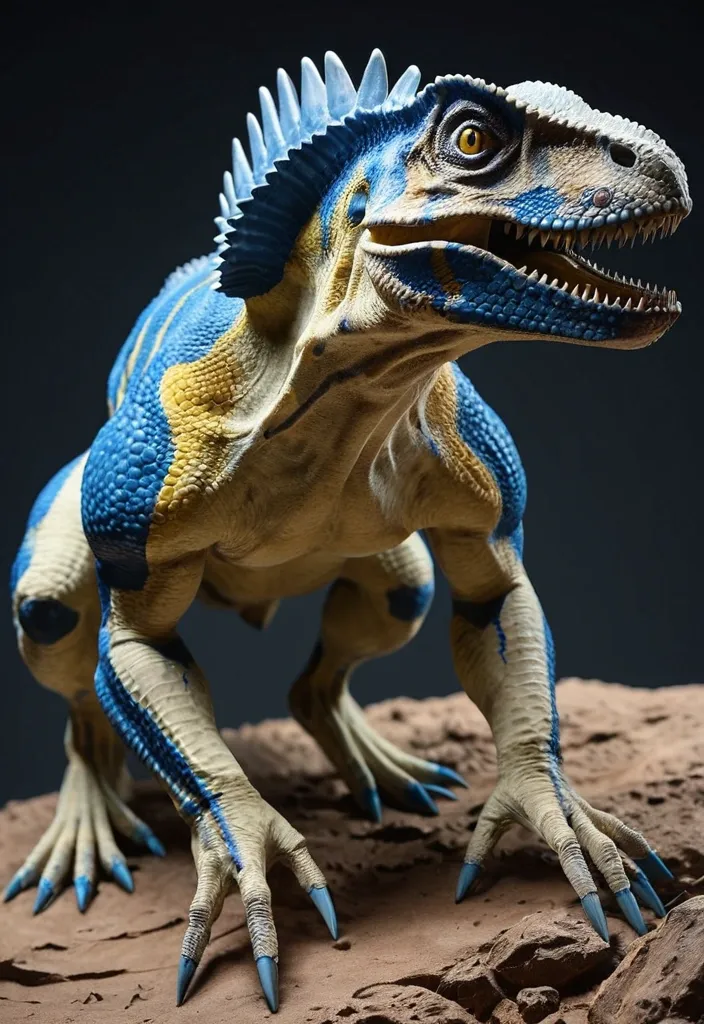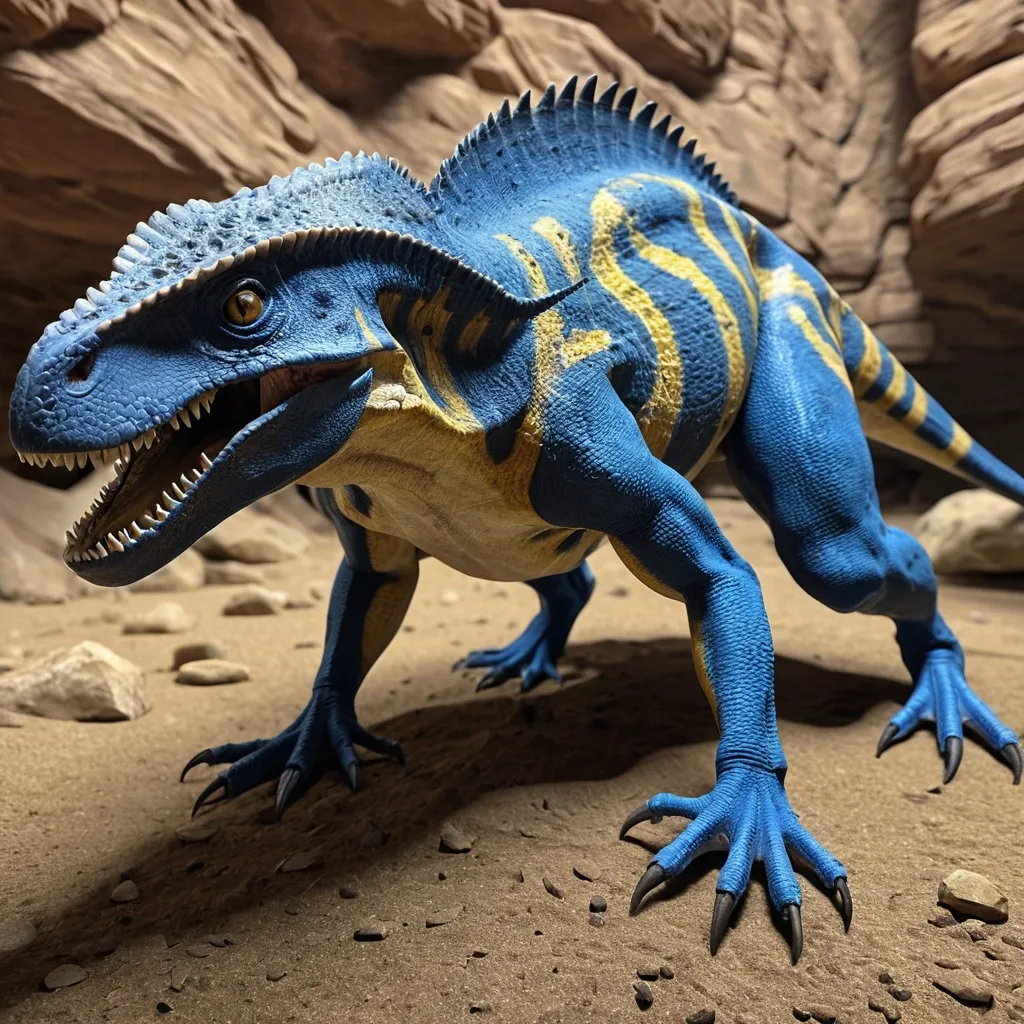Search Results for (crystals)
Explore AI generated designs, images, art and prompts by top community artists and designers.

The image features three pink tulips with water droplets on their petals , positioned diagonally from the top right to the bottom left. The flowers have green stems and leaves extending outward. Surrounding the tulips are numerous small clear crystals scattered across a light pink background. Interspersed among the crystals are several silver heart-shaped ornaments of varying sizes; some hearts appear textured or encrusted with tiny stones. Additionally , there are multiple large round pearls in shades of white and off-white placed near the lower part of the composition. One pearl is situated at the very top center above the uppermost tulip petal , another lies next to the middle flower's stem towards the mid-left , two more rest close together below this one (one slightly larger) , followed by smaller clusters spread out around them—some forming loose groups while others stand alone further apart toward the edges where they blend into the crystal scattering. ,

**"A celestial woman with flowing crystalline hair stands amidst a frozen dreamscape , her entire body sculpted from translucent diamond latticework that refracts light into prismatic rainbows. Each strand of her waist-length hair glows with internal fractals , moving like liquid glass in an unfelt wind. Her piercing diamond eyes contain swirling galaxies , pupils shaped like perfect cut gemstones that shift color with her emotions. She wears a gown of frozen starlight—a translucent , ice-like fabric that floats around her body in impossible gravity-defying folds , revealing subtle veins of glowing azure energy beneath its surface.** **The environment amplifies her ethereal presence:** - **Microscopic ice crystals** suspended around her form delicate halos of light - **Subsurface scattering** makes her skin glow from within , revealing intricate crystal structures - **HDR enhancement** captures every spectral highlight and shadow in hyperreal detail - **16K resolution** reveals individual geometric facets in her diamond fingertips - **Background auroras** cast ever-changing colors across her flawless form **Mood:** Otherworldly elegance meets frozen perfection—a being of impossible beauty carved from the heart of a dying star. **Style:** **Hyper-realistic digital fantasy** blending **sci-fi material science** with **romantic ethereal aesthetics**. Rendered with **ray-traced refraction** and **volumetric caustics** for photorealistic light interaction across her crystalline form." This version maintains your core vision while adding: 1. Stronger environmental storytelling 2. Advanced material/texture details 3. Cinematic lighting techniques 4. Technical rendering specifications 5. Emotional atmosphere The result should be a breathtaking image that pushes the boundaries of fantasy realism.ar-9:16 ,

Ada Wong from Resident Evil (sci-fi) Remake. She has short , straight black hair , wears a milletry dress , Include her iconic black gloves , stockings and choker. She has a pistol , in a holster strapped to he upper leg , portrayed through Chrono-Luminal Echoes , where past , present , and future movements are simultaneously captured. Employ fading trails of sapphire blue light transitioning to golden yellow , suggesting the passage of time , makes maintenance on the devices of a large weathered sci-fi Spaceship inspired with blasters , resembling a blend of futuristic and vintage design , rests by elven ruins landscape at sunset. The Spaceship , featuring a silver and gray color scheme with signs of decay and ice crystals forming on its surface , exudes a sense of abandonment and mystery. ,

Hyperrealism , hyperrealism. The breathtakingly captivating figure of a South Korean woman in her early twenties , with her long , sturdy legs stretching out gracefully , confident gaze , and glossy long black hair gently flowing over her shoulders. She is wearing a deep red velvet dress in the form of a corset that beautifully wraps around her upper body and a silk skirt that elegantly drapes down to the floor. She wore elegant bright red stiletto heels adorned with delicate embellishments of shining crystals. With a dynamic yet elegant pose reminiscent of walking on a catwalk , boasting perfect proportions and capturing a 9:16 vertical composition from head to toe. The background is the luxurious arena concert hall lobby filled with warm and brilliant gold lighting , and her figure is faintly visible on the shimmering marble floor , while a magnificent chandelier and luxurious interior subtly appear in the distance. Movie-like lighting , dramatic shadows , delicate skin expression , ultra-high definition 8K , clear focus , and depth of field. ,

Artificer workshop and guild dormitory combined. Rows of workbenches cluttered with runic tools , glowing crystals , and clock parts , side-by-side with personal bunks , maps , and weapons hung neatly. Copper pipes line the ceiling , steam drifting softly from vents. A small communal kitchen and a round table with tea , notes , and blueprints give it a lived-in feel. Orwen Vale adjusts a mechanical prosthetic arm under lamplight while an apprentice carries parts. Warm amber tones , cozy yet industrious. Camera: slightly elevated corner view showing both workshop and dorm. Style: painterly realism , rich brass and mahogany palette , hints of glowing runes. ,

Icon in the style of Warcraft 3 and early World of Warcraft , ability "Spiritism" , a Warcraft 3-style Ward with a glowing eyeball as its core , split into a 2x2 grid: top-left shows the ward dedicated to Holy Light magic with golden-white light , top-right shows it dedicated to Earth Force magic with brown , rocky texture and crystals , bottom-left shows it dedicated to Spiritual Energy magic with ethereal blue-green spirit energy , cinematic , high detail , vibrant game art , blizzard style --ar 1:1 ,

Ada Wong from Resident Evil (sci-fi) Remake. She has short , straight black hair , wears a milletry dress , Include her iconic black gloves , stockings and choker. She has a pistol , in a holster strapped to he upper leg , portrayed through Chrono-Luminal Echoes , where past , present , and future movements are simultaneously captured. Employ fading trails of sapphire blue light transitioning to golden yellow , suggesting the passage of time , makes maintenance on the devices of a large weathered sci-fi Spaceship inspired with blasters , resembling a blend of futuristic and vintage design , rests by elven ruins landscape at sunset. The Spaceship , featuring a silver and gray color scheme with signs of decay and ice crystals forming on its surface , exudes a sense of abandonment and mystery. ,

A robotic-looking Millennial jaguar with glowing eyes sits next to a cyberpunk woman in tattered tactical gear , portrayed through Chrono-Luminal Echoes , where past , present , and future movements are simultaneously captured. Employ fading trails of sapphire blue light transitioning to golden yellow , suggesting the passage of time , makes maintenance on the devices of a large weathered sci-fi Spaceship inspired with blasters , resembling a blend of futuristic and vintage design , rests by elven ruins landscape at sunset. The Spaceship , featuring a silver and gray color scheme with signs of decay and ice crystals forming on its surface , exudes a sense of abandonment and mystery. Background elements silhouetted against a glowing horizon. ,

A colossal , ancient tree with roots intertwined with glowing alien crystals , stands on a desolate moonscape under a sky filled with swirling galaxies. Strange , ethereal creatures with translucent wings flit between its branches. The overall mood is one of ancient mystery and otherworldly wonder. The style is a blend of dark fantasy concept art and hyperdetailed matte painting , with subtle , dreamlike lighting. ,

A glamorous female superstar performing live on stage , powerful pose with flowing hair , holding a microphone mid-song , captured in motion , wearing an extravagant Christmas-inspired couture gown with sparkling red and silver sequins and crystals , illuminated by dramatic blue stage lighting , snowflakes and glitter falling around , cinematic concert atmosphere , passionate expression , with a soulful gospel choir in festive robes softly visible in the background , and a cool electric guitarist on stage in stylish outfit , playing passionately , hyper-realistic , ultra-detailed , 8k , dynamic concert photography ,

A beauty woman , vibrantcolored hair with strands hairstyles Makeupaugmenting and wears a baroque-inspired outdoor dress with fur and fur cape , fashion style , makes maintenance on the devices of A large weathered sci-fi starship inspired with blasters , apparatus parts lie around in snow , resembling a blend of futuristic and vintage design , rests by elven ruins landscape at sunset. The ship , featuring a red and white color scheme with signs of decay and ice crystals forming on its surface , exudes a sense of abandonment and mystery. Background elements silhouetted against a glowing horizon. The warm light from the setting sun creates deep shadows and highlights the ship's texture , enhancing the contrast between the cold environment and the fading warmth. Compositionally , the ship is positioned slightly off-center , leading the eye into the scene while emphasizing its detail. Focus on hyper-realistic textures (texture:1.2) and vivid colors (color:1.2). Avoid any signs of living beings (no humans:1.1). Floating mist is glowing in the sunbeams ,

A weathered sci-fi starship elven ancient-inspired with blasters and a robot doing maintenance , apparatus parts lie around in snow , resembling a blend of futuristic and vintage design , rests in a tranquil snowy landscape at sunset. The ship , featuring a red and white color scheme with signs of decay and ice crystals forming on its surface , exudes a sense of abandonment and mystery. Background elements include sparse trees and strange mountains rocks partly silhouetted against a glowing horizon. The warm light from the setting sun creates deep shadows and highlights the ship's texture , enhancing the contrast between the cold environment and the fading warmth. Compositionally , the ship is positioned slightly off-center , leading the eye into the scene while emphasizing its detail. Focus on hyper-realistic textures (texture:1.2) and vivid colors (color:1.2). Avoid any signs of living beings (no humans:1.1). Floating mist is glowing in the sunbeams ,

A weathered sci-fi starship , resembling a blend of futuristic and vintage design , rests in a tranquil snowy landscape at sunset. The ship , featuring a blue and white color scheme with signs of decay and ice crystals forming on its surface , exudes a sense of abandonment and mystery. Background elements include sparse trees partly silhouetted against a glowing horizon. The warm light from the setting sun creates deep shadows and highlights the ship's texture , enhancing the contrast between the cold environment and the fading warmth. Compositionally , the ship is positioned slightly off-center , leading the eye into the scene while emphasizing its detail. Focus on hyper-realistic textures (texture:1.2) and vivid colors (color:1.2). Avoid any signs of living beings (no humans:1.1). ,

Epic fantasy ultra-realistic digital painting of five powerful characters , all around 27 years old , standing dramatically in a moonlit arena atop Mount Olympus , bathed in the glow of a full moon. The sky shimmers with a mystical aura , blending stars and divine energy , illuminating the center figure — a fierce and regal woman , her wavy golden-blonde hair cascades over her shoulders , wearing a silver , goddess-like dress with glowing accents. Her outfit is made of sheer , flowing silver-white and gold fabric , revealing her midriff and exuding both regality and sensuality. She holds a massive , shadowy , serpent-like creature wrapped around her shoulders , the dark texture of its scales contrasting with her glowing presence. She stands confidently at the front , eyes glowing slightly , emanating authority.To her left stands a young battle-worn prince standing in a dark , mystical setting. His intense blue eyes stare forward with unwavering resolve. He has short , tousled dark hair and a regal yet bloodied silver crown with a red jewel at the center. His face and arms are bruised and marked with fresh battle wounds , and dried blood stains his white tunic and cloak. He wears a dark , hooded cloak draped over his shoulders , partially open to reveal a torn white tunic secured with intricate brown leather belts and golden buckles. His hand clutches his cloak near his chest , as if steadying himself or hiding something. Next to him , a striking male warrior prince. He has an intense and noble expression , with sharp facial features and tanned skin. His long white hair flows down past his shoulders , partly tied back , adorned with a silver crown set with crimson crystals. Draped over his shoulder is a regal red scarf and a fur pelt , where a small , magical white raccoon-like creature perches. He wears ornate armor with engraved golden shoulder plates and armbands , layered over a white tunic. A brown leather belt crosses his chest and holds a dagger at his waist , hinting at both elegance and readiness for battle.On the right of the woman , a powerful , regal warrior is shirtless , revealing a sculpted , muscular torso with smooth , dark skin glowing. His expression is intense and calm. He wears an elegant white toga-like cloth draped across his chest and waist , secured with ornate golden brooches and red fabric accents. Intricate golden arm cuffs and wristbands with ancient engravings highlight his noble or divine status. Furthest right , a mysterious warrior has a powerful , muscular build and stands with calm yet intimidating confidence. He wears a dark half-mask covering the lower part of his face. His dark hair is tied back in a practical warrior’s style. He is shirtless , showing off his defined chest and abs , with a dark red cloak draped across one shoulder , fastened by an ornate golden brooch. His arms are wrapped in intricate bronze armor with ancient runes , and a leather strap crosses his torso , connected to a sword sheath. ,

Epic fantasy ultra-realistic digital painting of five powerful characters , all around 27 years old , standing dramatically in a moonlit arena atop Mount Olympus , bathed in the glow of a full moon. The sky shimmers with a mystical aura , blending stars and divine energy , illuminating the center figure — a fierce and regal woman , her wavy golden-blonde hair cascades over her shoulders , wearing a silver , goddess-like dress with glowing accents. Her outfit is made of sheer , flowing silver-white and gold fabric , revealing her midriff and exuding both regality and sensuality. She holds a massive , shadowy , serpent-like creature wrapped around her shoulders , the dark texture of its scales contrasting with her glowing presence. She stands confidently at the front , eyes glowing slightly , emanating authority.To her left stands a young battle-worn prince standing in a dark , mystical setting. His intense blue eyes stare forward with unwavering resolve. He has short , tousled dark hair and a regal yet bloodied silver crown with a red jewel at the center. His face and arms are bruised and marked with fresh battle wounds , and dried blood stains his white tunic and cloak. He wears a dark , hooded cloak draped over his shoulders , partially open to reveal a torn white tunic secured with intricate brown leather belts and golden buckles. His hand clutches his cloak near his chest , as if steadying himself or hiding something. Next to him , a striking male warrior prince. He has an intense and noble expression , with sharp facial features and tanned skin. His long white hair flows down past his shoulders , partly tied back , adorned with a silver crown set with crimson crystals. Draped over his shoulder is a regal red scarf and a fur pelt , where a small , magical white raccoon-like creature perches. He wears ornate armor with engraved golden shoulder plates and armbands , layered over a white tunic. A brown leather belt crosses his chest and holds a dagger at his waist , hinting at both elegance and readiness for battle.On the right of the woman , a powerful , regal warrior is shirtless , revealing a sculpted , muscular torso with smooth , dark skin glowing. His expression is intense and calm. He wears an elegant white toga-like cloth draped across his chest and waist , secured with ornate golden brooches and red fabric accents. Intricate golden arm cuffs and wristbands with ancient engravings highlight his noble or divine status. Furthest right , a mysterious warrior has a powerful , muscular build and stands with calm yet intimidating confidence. He wears a dark half-mask covering the lower part of his face. His dark hair is tied back in a practical warrior’s style. He is shirtless , showing off his defined chest and abs , with a dark red cloak draped across one shoulder , fastened by an ornate golden brooch. His arms are wrapped in intricate bronze armor with ancient runes , and a leather strap crosses his torso , connected to a sword sheath. ,

A dramatic Antarctic scene:Cinematic low-angle shot of a massive red and white icebreaker ship cutting through the frozen Antarctic ocean , its hull towering above the viewer as it approaches a mysterious ancient alien craft. The extraterrestrial vessel—sleek , metallic , and disc-shaped—is half-buried in the thick polar ice , projecting out the side of an iceberg at an angle. , its surface encrusted with millennia of frozen particles and frost. Towering blue-white icebergs frame the composition , their jagged peaks catching the harsh polar sunlight. The alien ship's hull gleams dully beneath layers of ice crystals , with strange geometric patterns barely visible through the frozen buildup. Steam rises from the icebreaker's heated hull as it cracks through the ice field. Brilliant lens flare streaks across the frame from the low Antarctic sun , creating dramatic light rays that illuminate the ice particles suspended in the frigid air. The scene conveys a sense of epic scale and otherworldly discovery , with the industrial might of human engineering confronting an artifact of alien origin in Earth's most remote wilderness. ,

A highly detailed and dynamic illustration of a **plate on a wooden table** , where **golden , crispy French fries** are dramatically leaping off the edge as if escaping—some mid-air , others tumbling in slow motion. The fries have a **realistic texture** , with visible salt crystals and a slightly greasy sheen , while the plate itself is **slightly tilted** , emphasizing the action. The background features a **cozy , warm-lit bistro setting** with blurred café elements like a checkered tablecloth , a half-empty drink glass , and soft ambient light casting gentle shadows. The style blends **hyper-realistic detailing** with a **whimsical , animated energy** , making the scene feel both vivid and playful. The lighting is **dramatic yet soft** , highlighting the fries' golden hue aga ,

超越畫面設計】 主體:女神皇后立於宇宙星河中央,身穿融合未來科技與星雲寶石的長裙,裙襬如星河流動,閃爍多層能量光紋 配件:皇冠結合星環與寶石,手指戴有精緻戒指,手腕環繞能量流動 氣場:身體外圍有純白能量光暈,內層流動彩色能量紋理,外層星辰閃耀 背景:深邃宇宙、星雲、光束交織,遠方有科技符號與星際建築,營造神聖且未來感的氛圍 層次:主體結構清晰,外在環境有能量流動與星光,背景元素豐富且夢幻 【AI繪圖超越版 Prompt(英文)】 A cosmic empress standing in the center of the galaxy , wearing a futuristic gown with flowing nebula layers and shimmering gemstones , elegant ring on her finger , radiant crown with star rings and crystals , pure white energy aura , colorful energy patterns flowing across her body , surrounded by sparkling stars and ethereal light wings , deep space background with nebula clouds , beams of light , holographic symbols , and distant sci-fi structures. Majestic , powerful , mysterious , elegant , high detail , vibrant colors , soft lighting , multi-layered composition. Negative prompts: blurry , low quality , cartoon , extra limbs , distorted body , watermark , text , logo 尺寸建議:768×1024 或 1024×1536(直式) — ,

masterpiece: Ancient Black Forest beech tree with glowing roots extending to human hands , interconnected by bioluminescent mycelium networks , subtle lightning pulses synchronizing through group of figures holding crystals , misty dawn light with golden fractals , ultra-detailed healing fantasy realism ,

Epic fantasy ultra-realistic digital painting of five powerful characters , all around 27 years old , standing dramatically in a moonlit arena atop Mount Olympus , bathed in the glow of a full moon. The sky shimmers with a mystical aura , blending stars and divine energy , illuminating the center figure — a fierce and regal woman , her wavy golden-blonde hair cascades over her shoulders , wearing a silver , goddess-like dress with glowing accents. Her outfit is made of sheer , flowing silver-white and gold fabric , revealing her midriff and exuding both regality and sensuality. She holds a massive , shadowy , serpent-like creature wrapped around her shoulders , the dark texture of its scales contrasting with her glowing presence. She stands confidently at the front , eyes glowing slightly , emanating authority. To her left stands a young battle-worn prince standing in a dark , mystical setting. His intense blue eyes stare forward with unwavering resolve. He has short , tousled dark hair and a regal yet bloodied silver crown with a red jewel at the center. His face and arms are bruised and marked with fresh battle wounds , and dried blood stains his white tunic and cloak. He wears a dark , hooded cloak draped over his shoulders , partially open to reveal a torn white tunic secured with intricate brown leather belts and golden buckles. His hand clutches his cloak near his chest , as if steadying himself or hiding something. Next to him , a striking male warrior prince. He has an intense and noble expression , with sharp facial features and tanned skin. His long white hair flows down past his shoulders , partly tied back , adorned with a silver crown set with crimson crystals. Draped over his shoulder is a regal red scarf and a fur pelt , where a small , magical white raccoon-like creature perches. He wears ornate armor with engraved golden shoulder plates and armbands , layered over a white tunic. A brown leather belt crosses his chest and holds a dagger at his waist , hinting at both elegance and readiness for battle. On the right of the woman , a powerful , regal warrior is shirtless , revealing a sculpted , muscular torso with smooth , dark skin glowing. His expression is intense and calm. He wears an elegant white toga-like cloth draped across his chest and waist , secured with ornate golden brooches and red fabric accents. Intricate golden arm cuffs and wristbands with ancient engravings highlight his noble or divine status. Furthest right , a mysterious warrior has a powerful , muscular build and stands with calm yet intimidating confidence. He wears a dark half-mask covering the lower part of his face. His dark hair is tied back in a practical warrior’s style. He is shirtless , showing off his defined chest and abs , with a dark red cloak draped across one shoulder , fastened by an ornate golden brooch. His arms are wrapped in intricate bronze armor with ancient runes , and a leather strap crosses his torso , connected to a sword sheath. ,

The hybrid was created by modifying the genome of a Tyrannosaurus rex , with the DNA of three other theropod species that were Utahraptor , Saurophaganax , and Giganotosaurus. Also the DNA of Quadrupes like Triceratops , and Scelidosaurus. DNA of modern animals such as Greater blue-ringed octopus , Inland Taipan , Northern Short-tailed Shrew , Komodo Dragon , Opossum , Mongoose , Gigantopithecus , Whiptail Lizard , Cuttlefish , and Tardigrades. The genome of Tyrannosaurus rex , Triceratops and Giganotosaurus was used as the base genome for the hybrid. Including the shape of the head in some parts from Giganotosaurus and Triceratops. Utahraptor DNA was added for high levels of intelligence and the ability to make plans , decisions and pack hunting. Reduced hind legs and Ape DNA added Knuckle-walking Quadruped. Triceratops , and Scelidosaurus were added to act as a biological form of armor that absorbed most of the incoming attacks. Northern short-tailed shrew , the Inland taipan's retractable fangs and the Komodo Dragon DNA was used to form the teeth of the Indominus that were used to tear through the flesh and armor of opponents. Saurophaganax and Gigantopithecus DNA added the presence of long strong arms with slashing hook claws and the use of tools. A swipe of the hybrid's claws would take down bigger opponents. While using tools for smaller elusive prey. Cuttlefish genes were intended to help the Venenosus withstand an accelerated growth , but it also added chromatophore cells in the skin so it could change the shape , color , and texture of its skin like a cuttlefish. Opossum , Mongoose and Tardigrades DNA was added for the Venenosus to be more resistant to climate changes , harmful toxins or bacterial infections , while tardigrades also added survival of extreme conditions such as exposure to extreme temperatures , extreme pressures , air deprivation , radiation , dehydration , and starvation. They have several defense mechanisms , including: A metabolic rate that gets as low as 0.01 percent of the normal rate. Organs protected by a sugary gel called trehalose. A protein that shields their DNA from radiation harm. Synthesis of cryoprotectant in chilly temperatures to prevent the development of ice crystals.Northern short-tailed shrew , the Inland Taipan , Greater blue-ringed octopus and the Komodo Dragon's DNA also added special cavities and glands in the skull that gave her infrared vision , and highly toxic saliva. Said DNA also gave her the ability to open her mandibles and jaws as wide as a snake , specifically at around 90 degrees.Lastly , DNA from a whiptail lizard was added for reproduction purposes. ,

The hybrid was created by modifying the genome of a Tyrannosaurus rex , with the DNA of three other theropod species that were Utahraptor , Saurophaganax , and Giganotosaurus. Also the DNA of Quadrupes like Triceratops , and Scelidosaurus. DNA of modern animals such as Greater blue-ringed octopus , Inland Taipan , Northern Short-tailed Shrew , Komodo Dragon , Opossum , Mongoose , Gigantopithecus , Whiptail Lizard , Cuttlefish , and Tardigrades. The genome of Tyrannosaurus rex , Triceratops and Giganotosaurus was used as the base genome for the hybrid. Including the shape of the head in some parts from Giganotosaurus and Triceratops. Utahraptor DNA was added for high levels of intelligence and the ability to make plans , decisions and pack hunting. Reduced hind legs and Ape DNA added Knuckle-walking Quadruped. Triceratops , and Scelidosaurus were added to act as a biological form of armor that absorbed most of the incoming attacks. Northern short-tailed shrew , the Inland taipan's retractable fangs and the Komodo Dragon DNA was used to form the teeth of the Indominus that were used to tear through the flesh and armor of opponents. Saurophaganax and Gigantopithecus DNA added the presence of long strong arms with slashing hook claws and the use of tools. A swipe of the hybrid's claws would take down bigger opponents. While using tools for smaller elusive prey. Cuttlefish genes were intended to help the Venenosus withstand an accelerated growth , but it also added chromatophore cells in the skin so it could change the shape , color , and texture of its skin like a cuttlefish. Opossum , Mongoose and Tardigrades DNA was added for the Venenosus to be more resistant to climate changes , harmful toxins or bacterial infections , while tardigrades also added survival of extreme conditions such as exposure to extreme temperatures , extreme pressures , air deprivation , radiation , dehydration , and starvation. They have several defense mechanisms , including: A metabolic rate that gets as low as 0.01 percent of the normal rate. Organs protected by a sugary gel called trehalose. A protein that shields their DNA from radiation harm. Synthesis of cryoprotectant in chilly temperatures to prevent the development of ice crystals.Northern short-tailed shrew , the Inland Taipan , Greater blue-ringed octopus and the Komodo Dragon's DNA also added special cavities and glands in the skull that gave her infrared vision , and highly toxic saliva. Said DNA also gave her the ability to open her mandibles and jaws as wide as a snake , specifically at around 90 degrees.Lastly , DNA from a whiptail lizard was added for reproduction purposes. ,







